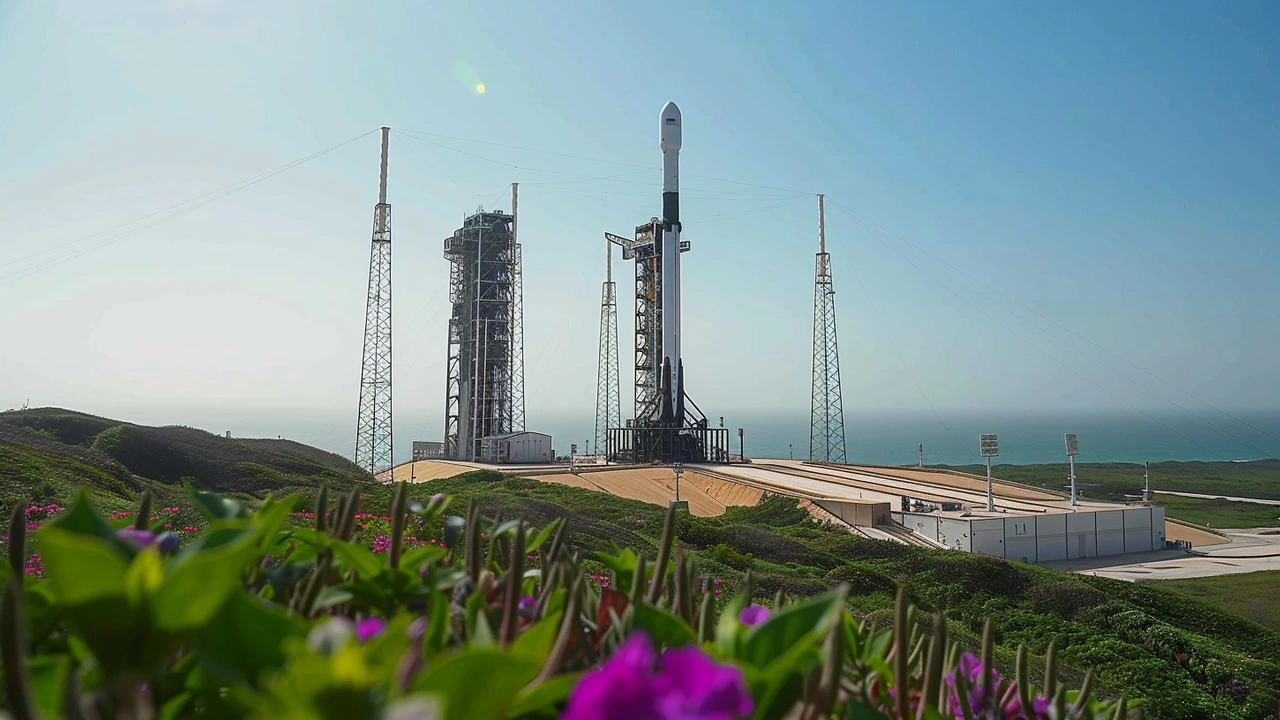SpaceX's Groundbreaking 350th Falcon 9 Launch
SpaceX, the private space exploration company founded by Elon Musk, has once again etched its name into the history books. On this momentous occasion, SpaceX launched its 350th Falcon 9 rocket, known as the Starlink 10-3 mission, from the historic Cape Canaveral Space Force Station. This feat not only underscores SpaceX's prowess in the realm of space exploration but also marks a monumental milestone in the company's journey towards making space travel more routine and economical. Falcon 9, tail number B1062, has now set a new record for the most flights by a single Falcon 9, marking its 22nd successful launch.
B1062 is no stranger to the cosmos. This seasoned rocket has carried an array of significant payloads into space. Among its previous missions, it has been responsible for the delivery of two GPS satellites, ferrying two crews of astronauts to the International Space Station, and contributing to 14 different Starlink missions. Each of these missions has played a critical role in advancing our understanding of space and our ability to utilize it for both scientific research and practical applications.
The Starlink 10-3 Mission
The Starlink 10-3 mission was another stride forward in SpaceX's ambitious project to build a global satellite internet constellation. This particular launch sent 23 more Starlink satellites into low Earth orbit, expanding the network that aims to provide high-speed internet access to underserved and remote areas around the world. The demand for reliable internet connectivity in these regions has never been higher, and SpaceX's Starlink project is poised to make a significant impact in bridging the digital divide.
Yet, the mission's success wasn't solely about deploying satellites. The precision and reliability demonstrated during the launch and subsequent recovery of the rocket's first stage were equally noteworthy. After propelling its payload into space, the first stage of Falcon 9 carried out a controlled descent, landing successfully on the droneship 'Just Read the Instructions.' This achievement marked the 85th successful landing on this platform and highlighted SpaceX's expertise in reusability, a critical factor in reducing costs and ensuring the sustainability of space missions.

Breaking Records and Pushing Boundaries
Recording its 22nd flight, B1062 has now become an icon of SpaceX's Falcon 9 fleet. This rocket has undoubtedly pushed the boundaries of what was once thought possible. By breaking the record for the most flights by a single Falcon 9, it has set a new benchmark in the industry, demonstrating the robustness and reliability of SpaceX's technology. This continuous reuse of rockets is integral to SpaceX's mission of lowering the cost of accessing space, making it more feasible for scientific, commercial, and even possibly civilian ventures in the future.
Beyond the Starlink 10-3 mission, SpaceX has been busy with other significant projects. Recently, the company successfully launched the NOAA GOES-U weather satellite via its tenth Falcon Heavy rocket. This launch was another testament to SpaceX's versatility and capability in handling a wide variety of space missions. The GOES-U satellite is expected to enhance weather forecasting capabilities, providing crucial data for monitoring and predicting severe weather conditions, natural disasters, and climate changes.
A Glimpse into SpaceX's Future Endeavors
The horizon looks promising for SpaceX. In a remarkable development, the company has been awarded a contract valued at up to $843 million to develop and deliver the U.S. Deorbit Vehicle. This highly anticipated project is set to play a pivotal role in safely deorbiting the International Space Station (ISS) at the end of its operational life in 2030. The Deorbit Vehicle's design and engineering will ensure a controlled descent and decommissioning of the ISS, aligning with NASA's plans for future commercial space stations. This move is emblematic of SpaceX's growing role in the evolving landscape of space exploration and commercialization.
SpaceX's continued innovation and milestones don't just signify technological achievements; they represent a broader shift in how humanity engages with space. By democratizing space travel and making it more cost-effective, SpaceX is not only enabling more frequent missions but is also paving the way for new opportunities in space tourism, research, and industry. The successes of Falcon 9 and other SpaceX ventures reassure us that the dream of a multi-planetary presence is inching closer to reality.

Conclusion
As SpaceX celebrates its 350th Falcon 9 launch with the Starlink 10-3 mission, it's clear that the trajectory of space exploration is on an upward path. The success of this mission, highlighted by the record-setting 22nd flight of Falcon 9 B1062 and the deployment of 23 Starlink satellites, serves as a reminder of how far we've come and how much further we can go. With projects like the U.S. Deorbit Vehicle on the horizon, and ongoing advancements in rocket reusability and satellite technology, SpaceX is not only reaching for the stars but also bringing the promise of space closer to all of us here on Earth.



Alok Kumar Sharma
June 28, 2024 AT 14:16Tanya Bhargav
June 28, 2024 AT 17:25Sanket Sonar
June 30, 2024 AT 02:58pravin s
July 1, 2024 AT 03:47Vaneet Goyal
July 1, 2024 AT 16:18Narinder K
July 3, 2024 AT 01:39Manoj Rao
July 3, 2024 AT 21:49Ambika Dhal
July 5, 2024 AT 02:04Bhavesh Makwana
July 5, 2024 AT 07:54Amita Sinha
July 5, 2024 AT 13:50Vidushi Wahal
July 6, 2024 AT 07:35Bharat Mewada
July 6, 2024 AT 14:47